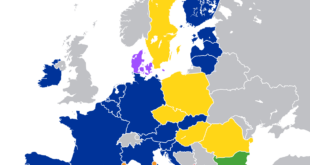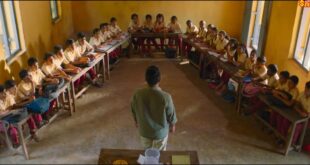- The Ministry of Women and Child Development on Saturday rejected the Global Hunger Index (GHI) that ranked India 107 among 121 countries.
- The GHI is a peer-reviewed annual report that endeavours to “comprehensively measure and track hunger at the global, regional, and country levels”.
- As per the Ministry, the report lowers India’s rank based on the estimates of the Proportion of Undernourished (PoU) population.
- It elaborates that the U.S. Food and Agriculture Organisation (FAO) estimate is based on the ‘Food Insecurity Experience Scale (FIES)’ survey module that bears a sample size of 3,000 respondents.
- It stated that the data represented a miniscule proportion for a country of India’s size.
- The GHI website explains that while FAO uses a suite of indicators on food security, the GHI only uses the PoU obtained through food balance sheets based on data reported by member countries, including India.
Background:
- For the second time in two years, the Ministry of Women and Child Development on Saturday rejected the Global Hunger Index (GHI) that ranked India 107 among 121 countries.
- India was accorded a score of 29.1 out of 100 (with 0 representing no hunger), placing it behind Sri Lanka (66), Myanmar (71), Nepal (81) and Bangladesh (84).
- It referred to the index as “an erroneous measure of hunger”.
Global Hunger Index
- The GHI, is a peer-reviewed annual report that endeavours to “comprehensively measure and track hunger at the global, regional, and country levels”.
- Authors of the report primarily refer to the United Nations’ Sustainable Development Goal 2 (SDG 2) that endeavours to achieve ‘Zero Hunger’ by 2030.
- According to them, the report attempts to “raise awareness and understanding of the struggle against hunger”.
The GHI score is computed using four broad indicators —
- undernourishment (measure of the proportion of the population facing chronic deficiency of dietary energy intake),
- child stunting (low height for age),
- child wasting (low weight for height) and
- child mortality (death of a child under the age of five).
Four Metrics
- Undernourishment, as per the authors, provides a basis to measure inadequate access to food and is among the lead indicators for international hunger targets, including the UN SDG 2.
- Child stunting and mortality, offers perspective about the child’s vulnerability to nutritional deficiencies, access to food and quality of nutrition.
- Since children (especially below five) are at a developmental age there is a greater and urgent requirement for nutrition with results particularly visible.
- This forms the basis of assessing nutritional requirement among children.
- Adults are at a sustainable age — they are not growing but rather subsisting on nutrition for healthy survival.
- And lastly, on the same rationale, child mortality indicates the serious consequences of hunger.
- As per the Ministry for Women and Child Development, the report lowers India’s rank based on the estimates of the Proportion of Undernourished (PoU) population.
- It elaborates that the U.S. Food and Agriculture Organisation (FAO) estimate is based on the ‘Food Insecurity Experience Scale (FIES)’ survey module conducted using the Gallup World Poll, that bears a sample size of 3,000 respondents being asked eight questions.
- It stated that the data represented a miniscule proportion for a country of India’s size. It countered the assertions in the report pointing to India’s per capita dietary energy supply increasing year-on-year due to enhanced production of major agricultural commodities in the country over the years.
The GHI website provides important clarifications on these points raised by the government. It explains that while FAO uses a suite of indicators on food security, including two important indicators —
- prevalence of undernourishment and prevalence of moderate or severe food insecurity based on FIES —
- the GHI only uses the PoU obtained through food balance sheets based on data reported by member countries, including India.
- A food balance sheet provides a comprehensive picture of the pattern of a country’s food supply during a specified reference period.
- It lists down the source of the supply and its utilisation specific to each food category.
- On why the GHI uses three child-specific indicators out of the four to calculate hunger for a country’s population, the website explains,
- “By combining the proportion of undernourished in the population (1/3 of the GHI score) with the indicators relating to children under age five (2/3 of the GHI score), the GHI ensures that both the food supply situation of the population as a whole and the effects of inadequate nutrition within a vulnerable subset of the population are captured.
- In fact, a Senior Policy Officer at the GHI said that, “All four indicators used in the calculation of the global hunger are recognised by the international community, including India, and used for measuring progress towards the UN SDGs.”
Controversy
- According to the Ministry, the report is not only disconnected from ground reality but also chooses to ignore the food security efforts of the Central government especially during the pandemic.
- The Union Cabinet through the Pradhan Mantri Garib Kalyan Ann Yojna (PM-GKAY), provisioned an additional 5 kg ration per person each month in addition to their normal quota of foodgrains.
- According to Professor of Economics at the Ambedkar University, Dipa Sinha, the schemes definitely helped ease the situation but fell short of being adequate.
SOURCE: THE HINDU, THE ECONOMIC TIMES, PIB
 Chinmaya IAS Academy – Current Affairs Chinmaya IAS Academy – Current Affairs
Chinmaya IAS Academy – Current Affairs Chinmaya IAS Academy – Current Affairs



